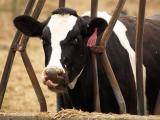Apr 15, 2011
WHO flu virus-sharing group reportedly close to a deal
A World Health Organization (WHO) working group that has been meeting all week in Geneva to finalize a global influenza virus-sharing plan is working late into the night on the final day, Fadela Chaib, a WHO spokeswoman, told CIDRAP News. Reuters reported yesterday that a final deal is close, with Indonesia on board and the group waiting for formal approval from the United States. In a press conference on Apr 12 the two ambassadors leading the working group said they were optimistic that the agreement would be finished and finalized in time for it to be presented and endorsed at the World Health Assembly meeting in May. Senior diplomats told Reuters that the pharmaceutical industry has agreed to provide about half of the $58 million needed each year to help improve developing countries' lab capacity and access to vaccines and antivirals. The WHO working group has been developing an influenza virus-sharing plan since 2007,
following Indonesia's decision to withhold its H5N1 avian influenza samples as a protest against the high cost and lack of access to pandemic vaccines for developing countries.
Apr 14 Reuters story
Apr 12 CIDRAP News story
European agency recommends interim label change for Pandemrix
The European Medicines Agency (EMA) today recommended a label change for GlaxoSmithKline's Pandemrix pandemic H1N1 vaccine to caution about its possible connection to narcolepsy in children and advise providers to perform an individual benefit-risk assessment before using it. In a press release today, the agency said this is an interim step until its European review concludes this summer. The release said the EMA's Committee for Medicinal Products for Human Use (CHMP) "reviewed all available data, including new findings from Sweden and France on the suspected link between narcolepsy in children and adolescents and Pandemrix. The CHMP concluded that, following the earlier results of an epidemiological study from Finland, the new evidence strengthened the signal in children and adolescents, but that the data had methodological limitations." Preliminary results from Sweden showed a fourfold increase of narcolepsy in those 20
years old and younger who received Pandemrix and paralleled earlier results from Finland. Data from France appeared to provide some further evidence of a vaccine-narcolepsy link.
Apr 15 EMA press release
Nebraska finds H7 virus in three backyard flocks
The detection of a low-pathogenic virus in a backyard bird flock in eastern Nebraska has prompted the quarantine of several other mixed-bird flocks, the Nebraska Department of Agriculture (NDA) said in an Apr 13 statement. Evidence of the virus turned up during routine testing at an exotic bird sale. Christin Kamm, spokeswoman for the NDA, told CIDRAP News that the avian influenza is an H7 subtype and that more tests are being done to further characterize the virus. Dr Dennis Hughes said in the statement that the NDA traced the source of the birds and how they were distributed during the bird sale. "We have no reason to believe this case is anything other than an isolated incident," he said. The initial flock that tested positive for the virus will be culled. Two of five flocks containing birds purchased from that flock also tested positive for the virus and will be culled. Susan Joy, general manager of Nebraska Poultry Industries, said
in the statement that the state's backyard flocks typically contain hobby birds, show birds, or those used for personal consumption.
Duke lab partners with Novartis flu vaccine group
Duke University's Human Vaccine Institute yesterday announced that it will collaborate with Novartis to conduct research and to help develop vaccine seed strains that can be used at Novartis' new cell-culture vaccine manufacturing facility located 30 miles away in Holly Springs, N.C.. Duke spelled out the details of the collaboration on a press release. The Duke research will take place at the Regional Biocontainment Laboratory, sponsored by the National Institute of Allergy and Infectious Diseases. The 5-year agreement calls for the two groups to activate and begin operations within 24 hours of a decision to move to pandemic status based on information to vaccine makers from groups such as the US Centers for Disease Control and Prevention and the WHO. Richard Frothingham, MD, director of the Duke
laboratory, said in the statement that vaccine delivery was delayed during the 2009 H1N1 outbreak due to a reliance on older egg-based technologies. "But with this partnership we have the opportunity to deliver new types of vaccine more rapidly," he added.
Apr 14 Duke University Medical Center press release
Secondary H1N1 attack rate in Ontario was similar to seasonal flu
In Ontario households that had a case of pandemic 2009 H1N1 pandemic influenza, 25.4% of children experienced an influenza-like illness (ILI) after the primary case-patient became sick, and 42.4% had an acute respiratory illness (ARI), according to a new study. The overall secondary attack rate, including adults, was 10.3% for ILI and 20.2% for ARI. Researchers studied data from 87 cases and 266 household contacts supplied by local health units within the province and found the median time between symptom onset in index cases and secondary cases was about 3 days. They point out that the overall secondary attack rate is similar to that of seasonal flu.
Apr 14 BMC Public Health abstract


















